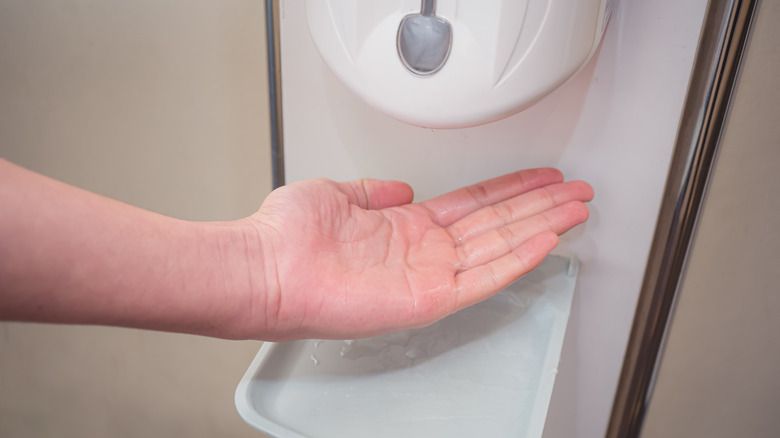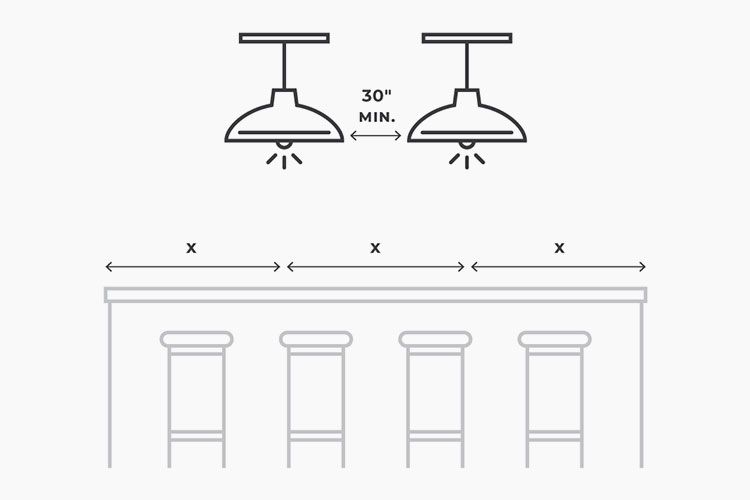Are Refillable Soap Dispensers Sanitary?
A Fresh Approach to Health and Hygiene
With increasing awareness around sustainability and waste reduction, many households and businesses are switching to soap dispensers that can be refilled again and again. But some consumers wonder – are these reusable soap dispensers actually hygienic? This article takes a deep dive into the cleanliness factors around refillable soap dispensers, examining bacterial contamination risks, proper maintenance, and best practices for keeping your hands squeaky clean.
Types of Refillable Dispensers
There are two main types of refillable soap dispensers – wall-mounted and countertop.
Wall-mounted dispensers are designed to attach directly to a wall or sink. They often have a nozzle and pump mechanism that dispenses soap when pushed. Wall-mounted units tend to have a more sleek, minimalist look and don’t take up counter space. However, they require drilling into the wall for installation. Examples include simple manual dispensers as well as more high-tech motion-activated dispensers (Types of Soap Dispensers: Manual vs. Automatic).
Countertop dispensers sit on the counter or sink near the faucet. They come in a wide range of styles – some are purely functional while others have decorative elements. Most use a pump mechanism to dispense soap. These dispensers take up some counter real estate but don’t require any installation. Popular options are gooseneck dispensers, foaming dispensers, and dispensers with stands (What are the Different Types of Liquid Soap Dispensers?).
The main differences come down to look, space considerations, and installation requirements. Wall-mounted dispensers have a more integrated look while countertop versions are simpler to set up. Certain types like motion-activated dispensers also provide added functionality.
Benefits of Refillable Dispensers
There are several environmental and economic benefits to using refillable soap dispensers rather than disposable soap bottles or cartridges.
One major advantage of refillable dispensers is the ability to reduce plastic waste. Single-use plastic soap bottles contribute significantly to landfill waste and plastic pollution. Refillable dispensers allow the reuse of a durable plastic pump and eliminate the need for disposable bottles. By refilling a single dispenser until it wears out, you can avoid throwing away dozens of plastic containers over that timeframe.
Over the long run, refillable systems are often lower cost than constantly buying new soap bottles. Although the initial investment in a reusable dispenser might be higher, the per ounce cost of refill soaps purchased in bulk is usually cheaper than pre-packaged bottles. By reducing disposable plastic use, there can also be cost savings related to waste collection fees in some municipalities.
Refillable soap dispensers also offer more customization options compared to disposable soap. Refills allow users to switch between liquid hand soap fragrances and formulas at will. Bulk refills also come in a wider variety of scent and ingredient options compared to limited store offerings. Users can match soap to their personal preferences.
According to Dial, refillable soap systems provide environmental benefits through reduced plastic waste and offer convenience and cost savings for households. The customizable options of refills allow for personalized soap choices.
Hygiene Concerns
Refillable soap dispensers can harbor dangerous levels of bacteria if not properly cleaned and maintained. Research by GOJO found that 1 in 4 refillable bulk soap dispensers are contaminated with unsafe bacteria levels, leaving hands more germ-laden after washing. The moist, soap-filled environment inside these dispensers allows bacterial buildup over repeated use. Pseudomonas aeruginosa, staphylococcus aureus, and other bacteria can accumulate to up to 25 times higher levels than with sealed soap cartridges.
Without thorough cleaning between refills, bacteria are reintroduced into the soap and spread to users’ hands. A study published in Infection Control and Hospital Epidemiology found that 21% of refillable dispensers tested positive for bacterial contamination. Any bacteria lingering in the soap or on the pump end up back on users’ hands when dispensed. Proper cleaning and disinfecting requires fully disassembling dispensers and soaking all components in bleach or alcohol-based solutions.

Refillable dispensers also risk cross-contamination if soap from one dispenser is used to refill other units. Dispensers in restrooms or other public places pose the highest risk for bacterial buildup. Maintaining truly sanitary conditions requires diligent efforts to clean, disinfect, and refill dispensers safely.
Proper Maintenance
To keep refillable soap dispensers sanitary, proper maintenance is essential. This includes following a regular cleaning schedule, using products recommended for dispensers, and refilling with the correct type of soap.
The cleaning frequency depends on usage, but daily or weekly cleaning is ideal for high traffic areas. Refer to manufacturer guidelines, but typical maintenance includes wiping down the outside of dispensers with a soft damp cloth and warm soapy water. Refrain from using abrasive cleaners or bleach solutions that could damage components. For the nozzle and pump mechanism that dispenses soap, flush these areas with warm water to prevent buildup and clogs per experts (Source 1).
Only use soaps designed for dispensers. Liquid and foam soaps formulated for high use in dispensers are readily available. Avoid heavily perfumed or opaque soaps that could clog the pump. Do not dilute liquid soaps, as this alters the formula and can impact performance. Follow any special manufacturer instructions for recommended soaps and refilling procedures.
With proper maintenance and the right soap, refillable dispensers can provide an effective, sanitary and eco-friendly hand hygiene solution for residential and commercial settings alike.
Commercial vs Residential Use
There are some key differences between refillable soap dispensers used in commercial versus residential settings:
Commercial settings like restaurants, offices, and schools have much stricter regulations around hygiene and food safety. Commercial kitchens must follow health department codes that residential kitchens do not. This means commercial soap dispensers face tighter restrictions and regular inspections (Symmons).
Commercial soap dispensers also see much higher usage frequency. A dispenser in a busy restaurant bathroom will need to be refilled and cleaned more often than one in a home bathroom. The heavy usage in commercial settings makes proper maintenance even more critical.
Another difference is the type of soap used. Commercial kitchens and bathrooms usually use industrial style bulk refills rather than bar soap or smaller soap bottles common in homes. The large soap bags allow for high volume refills (Rail19).
So while refillable soap dispensers present benefits in both realms, extra caution should be taken in commercial settings to follow safety guidelines and ensure dispensers are properly maintained.
Dispenser Design and Features
When it comes to keeping refillable soap dispensers hygienic, the design and features play a critical role. Some key aspects to look for include:
Self-cleaning models – Some dispensers have self-cleaning features like timers that regularly flush water through the valves to prevent buildup and cross-contamination between refills.
Antimicrobial materials – Dispensers made with antimicrobial components like copper can help inhibit the growth of bacteria and other germs on surfaces.
Sealed mechanisms – Look for dispensers with sealed, self-contained mechanisms that prevent exposure to water and contamination. Locking refills that can only be replaced by maintenance staff also promotes sanitary use.
By opting for dispensers with advanced hygienic features, facilities can utilize refillable models while still ensuring a high level of cleanliness and safety for users.
Refilling Best Practices
When refilling soap dispensers, it’s important to follow best practices to avoid contamination and keep the dispensers sanitary. According to the CDC, the soap type matters – foaming and liquid soaps have different formulations, so always refill with the same kind of soap originally intended for the dispenser.
To avoid introducing germs when refilling, clean the nozzle and pump thoroughly first with hot water and soap. Let all parts dry completely before refilling. Wearing gloves during the refilling process can further prevent contamination.
Be sure to avoid touching the pump or nozzle when refilling. Carefully pour new soap in, avoiding spills. Once refilled, seal the dispenser properly so soap and germs don’t enter from the top. The CDC recommends sealing with tape or a stopper if possible. Tightly close any caps or lids.
By following these best practices, refillable soap dispensers can remain just as sanitary as sealed dispensers. Proper maintenance and careful refilling prevents contamination.
Alternatives
While refillable soap dispensers have many benefits, there are alternatives that some people may prefer for convenience, hygiene or affordability.
Automatic/touchless dispensers – These dispensers use motion sensors to detect hands and automatically dispense soap. This avoids the need to push or touch the dispenser, improving hygiene. Popular options like the Simplehuman touch-free soap dispenser allow battery or AC adapter operation. While convenient, these dispensers may still use disposable cartridges and batteries.
Disposable cartridges – Many household brands like Softsoap, Mrs. Meyers and Method offer disposable cartridges or pouches that just snap into reusable dispenser bases. This avoids leftover soap messes during refills. However, the disposable inserts still create plastic waste. Eco-friendly options like Plaine Products use plant-based, compostable inserts.
Hand sanitizer – Instant hand sanitizers are portable and effective for killing germs. But they may dry hands out with frequent use. Many also contain alcohol, fragrances and other chemicals. Green options like Grove Co offer more natural, moisturizing hand sanitizer.
Conclusion
In summary, while refillable soap dispensers have some attractive advantages like reducing waste and being more eco-friendly and cost-effective, there are significant hygiene concerns to be aware of. Improper refilling techniques, inadequate cleaning, and subpar dispenser construction can lead to bacterial and mold growth. However, with proper maintenance and design features like antimicrobial materials and sealed inner mechanisms, these risks can be mitigated. Commercial shared dispensers require more oversight and maintenance than residential ones.
Overall, refillable soap dispensers can be an acceptable option if refilled and cleaned properly. Use high-quality dispensers, wash thoroughly between refills, and replace internal mechanisms regularly. Consider antimicrobial or sealed cartridge dispensers for high-traffic commercial settings. While the eco-benefits are appealing, be sure to prioritize hygiene, especially in healthcare facilities. Alternatives like bar soap may be preferable in some cases. With proper precautions, refillable dispensers can be a sustainable choice without sacrificing cleanliness.





